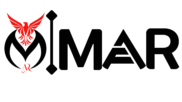Pay-Per-Click Advertising (PPC)
- Google Ads: Creating and managing paid search ads on Google’s search network.
- Display Advertising: Designing and placing banner ads on various websites across the Google Display Network.
- Remarketing: Targeting previous website visitors with tailored ads to bring them back.
- Social Media Ads: Running targeted ad campaigns on platforms like Facebook, LinkedIn, and Instagram.
Maximize Your Reach and ROI with Pay-Per-Click Advertising!
Pay-Per-Click (PPC) advertising is a digital marketing model where advertisers pay a fee each time their ad is clicked. It’s a way to buy visits to your site rather than attempting to “earn” those visits organically. PPC is commonly used on search engines and social media platforms, making it a powerful tool for driving targeted traffic and generating leads.
Key Components of PPC Advertising
-
Keyword Research:
- Description: Identifying and selecting relevant keywords that potential customers use to search for products or services. Effective keyword research is crucial for targeting the right audience.
- Key Practices:
- Utilizing tools like Google Keyword Planner to find high-traffic keywords.
- Analyzing competitor keywords to identify opportunities.
- Focusing on long-tail keywords for more specific targeting.
-
Ad Creation:
- Description: Crafting compelling and engaging ads that capture attention and encourage clicks. This includes writing persuasive ad copy and selecting eye-catching visuals.
- Key Practices:
- Highlighting unique selling points (USPs) in the ad copy.
- Using clear calls-to-action (CTAs) to guide user behavior.
- Testing different ad formats (text, display, video) for effectiveness.
-
Landing Page Optimization:
- Description: Ensuring that the page users land on after clicking the ad is relevant, user-friendly, and optimized for conversions. A well-designed landing page improves the chances of turning clicks into customers.
- Key Practices:
- Aligning landing page content with the ad’s messaging.
- Streamlining the design for easy navigation and fast loading times.
- Including strong CTAs and forms to capture leads.
-
Bid Management:
- Description: Setting and managing bids for keywords to determine how much you’re willing to pay per click. Effective bid management maximizes visibility while controlling costs.
- Key Practices:
- Utilizing automated bidding strategies offered by platforms (e.g., target CPA, maximize conversions).
- Regularly reviewing and adjusting bids based on performance.
- Allocating budget based on keyword performance and ROI.
-
Analytics and Reporting:
- Description: Tracking and analyzing the performance of PPC campaigns to assess effectiveness and make data-driven decisions. Key metrics help evaluate success and identify areas for improvement.
- Key Practices:
- Monitoring key performance indicators (KPIs) such as click-through rates (CTR), conversion rates, and cost per acquisition (CPA).
- Using tools like Google Analytics and platform-specific dashboards for insights.
- A/B testing ads and landing pages to optimize performance.
Benefits of PPC Advertising
- Immediate Results: Unlike organic SEO, PPC can drive traffic almost instantly upon launch.
- Targeted Reach: Enables precise targeting based on demographics, interests, and behaviors, ensuring ads reach the right audience.
- Budget Control: Offers flexibility in budgeting, allowing you to set daily or monthly limits.
- Measurable ROI: Provides detailed analytics to track performance and optimize campaigns for better returns.
- Brand Awareness: Increases visibility in search results and social media feeds, enhancing brand recognition.
By leveraging PPC advertising effectively, businesses can achieve their marketing goals, enhance online visibility, and drive qualified traffic to their websites. Embrace PPC as a crucial part of your digital marketing strategy to maximize reach and ROI!
